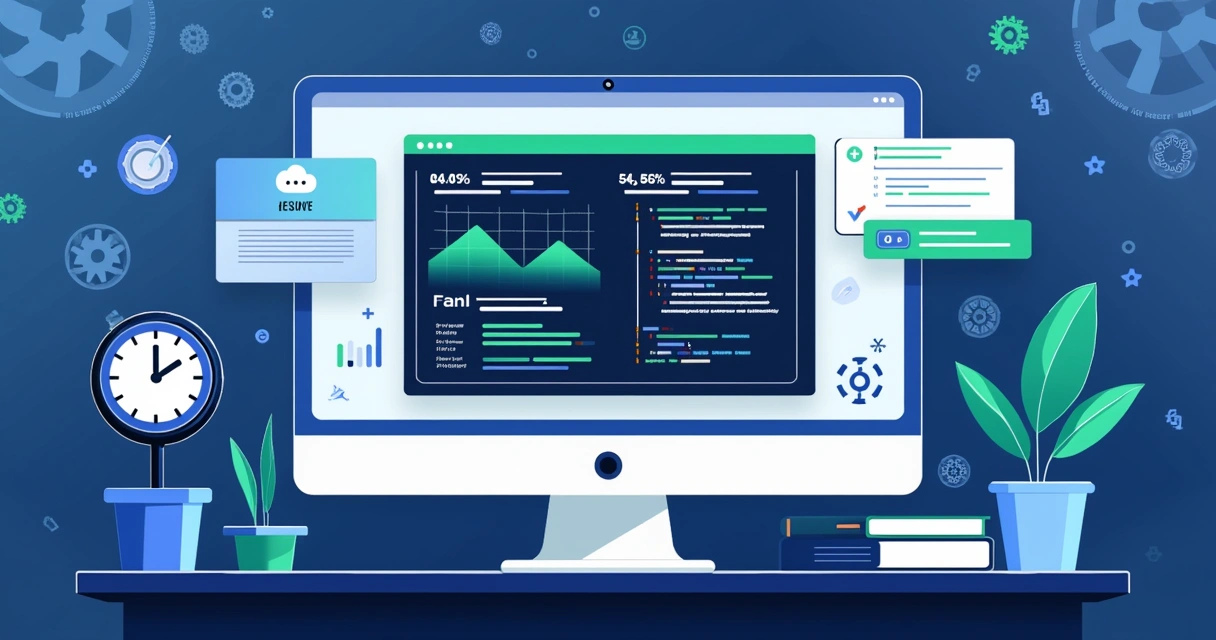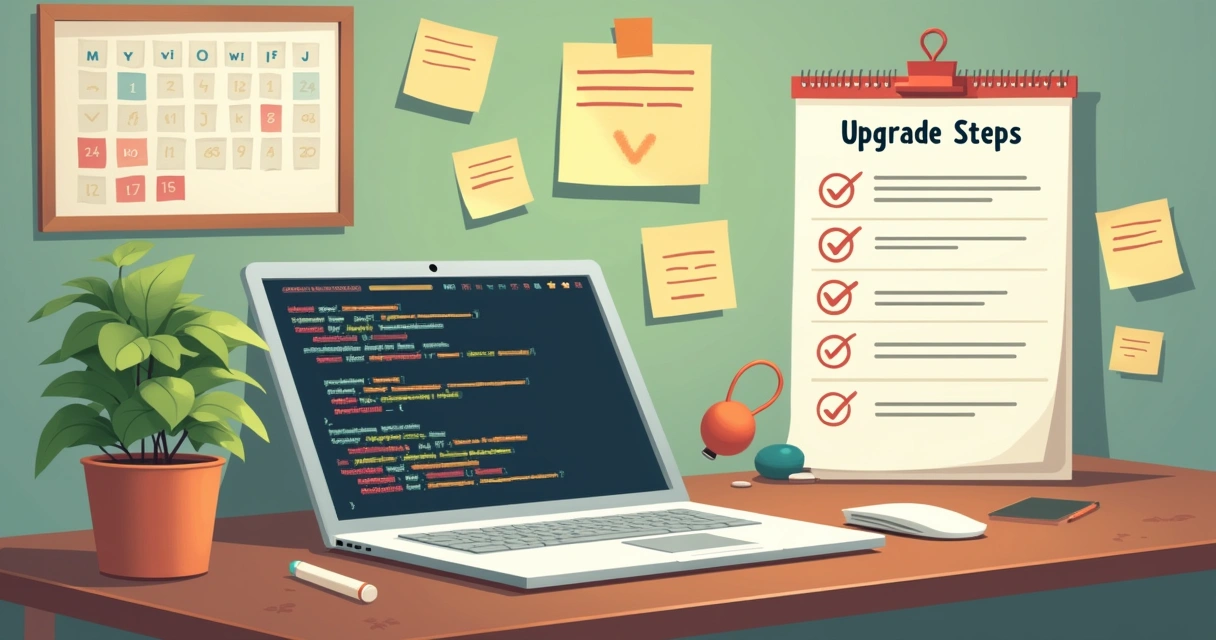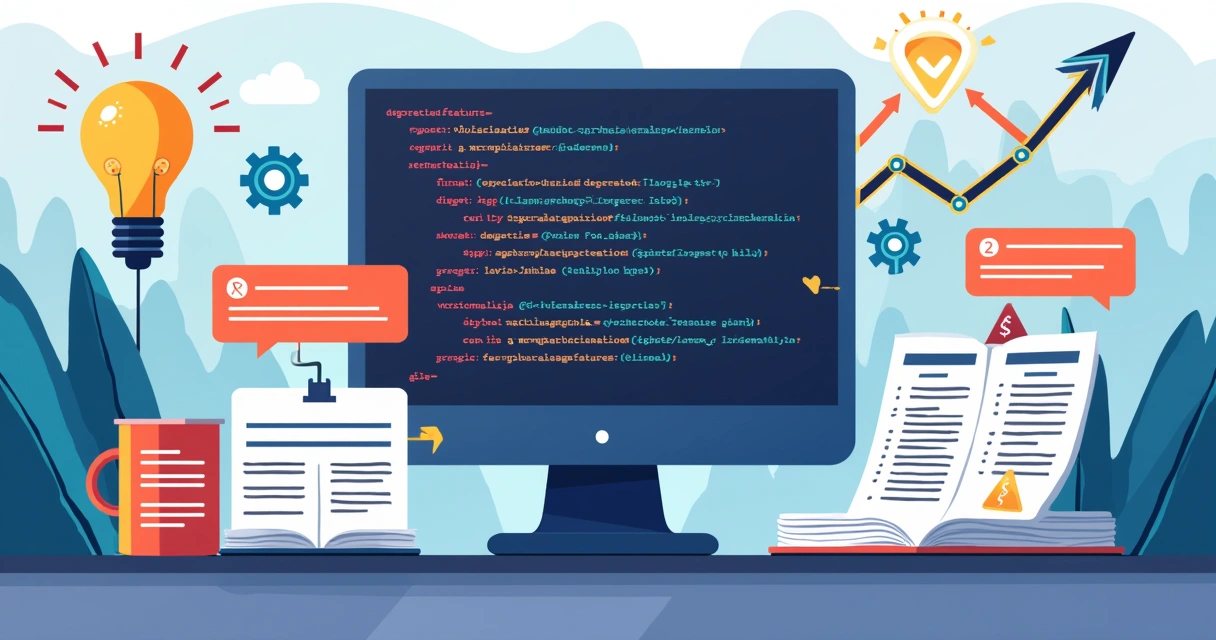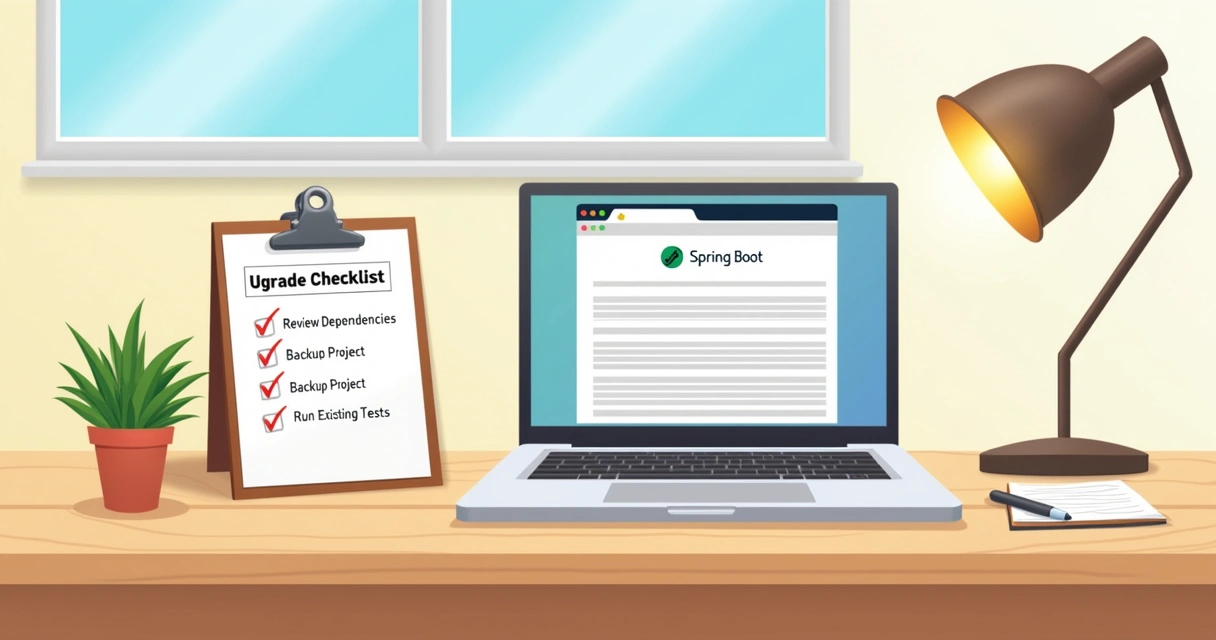
Understanding the transition from Spring Boot 2.x to 3.x
Moving to a new version of Spring Boot is an exciting journey. As you upgrade to 3.x, there are some important things to keep in mind. This transition can enhance your application’s performance and security, but it requires some preparation. Here are a few points to consider:
- Java Version: Spring Boot 3.x needs at least Java 17. Make sure you’re running this version or higher.
- Jakarta EE: With the new version, many components now use the Jakarta EE namespaces. Familiarizing yourself with these changes can save you time and headaches.
- Check for Deprecated Features: Some features from 2.x may not exist anymore. Look through your code for any that might need replacing.
Taking these steps can make your upgrade smoother. Embrace the changes, and you’ll discover new opportunities to leverage the power of Spring Boot 3.x in your projects.
 Key new features in Spring Boot 3.x
Key new features in Spring Boot 3.x
Upgrading to Spring Boot 3.x can really benefit your projects, making them more efficient and easier to manage. Let’s explore some exciting new features that can transform your development experience.
- Better Monitoring: Spring Boot now includes tools for tracking metrics and performance. This helps you quickly spot issues, so you can focus on fixing them rather than searching for them.
- Faster Startup: By using GraalVM, you can turn your applications into native executables. This means your app starts up in a flash and uses less memory, which is great for performance.
- Easier Configuration: Managing your application’s properties has never been simpler. The new setup allows for cleaner code that’s easier to read and maintain.
- Improved Security: Spring Security has received updates that simplify adding security measures to your apps. This means you can protect your applications more effectively without complicating your code.
- New Java Features: Spring Boot 3.x supports the latest Java innovations. This means you can take advantage of features like pattern matching and record types, making your code cleaner and more robust.
These upgrades not only improve how your applications run but also make your job as a developer easier. By embracing what Spring Boot 3.x offers, you’ll be armed with powerful tools to build and maintain robust applications. Dive in and explore these capabilities for yourself!
Comparison of Spring Boot 3.x vs 2.x
When diving into Spring Boot, especially the new version 3.x, it’s important to understand what’s changed from 2.x. This knowledge can make your development process smoother and more efficient.
One of the biggest changes is that Java 17 is now required. If you’re still using an older version like Java 8 or 11, you’ll need to upgrade. This might sound daunting, but think of it as a chance to utilize newer features that can enhance your code and improve performance.
Another crucial shift is the move from Java EE to Jakarta EE. This means many of the old packages you might be used to have new names. For example, if you were using `javax.servlet`, you’ll now need to use `jakarta.servlet`. It’s a small adjustment, but it’s essential to keep your applications running smoothly.
Some features from Spring Boot 2.x are now deprecated or simply removed. So, take some time to check your existing code for anything that could be outdated. This proactive approach helps prevent more significant issues down the road.
Lastly, the new version brings performance improvements. You’ll notice faster startup times and better resource management. This can make a huge difference, especially when deploying applications in production.
- Java Compatibility: Use only Java 17 or newer.
- Jakarta EE Transition: Familiarize yourself with the new package names.
- Check for Deprecation: Ensure your code is up to date.
- Performance Boost: Enjoy improved efficiency in your applications.
 Navigating the Spring Boot migration process
Navigating the Spring Boot migration process
Navigating the upgrade from Spring Boot 2.x to 3.x can feel challenging, but breaking it down can help. Here are some steps to make the transition smoother:
- Check Your Dependencies: Make sure all the libraries and tools you currently use work with Spring Boot 3.x. If some are outdated, look for updated versions or replacements that fit well.
- Backup Your Project: Always create a backup before making changes. This way, if something goes wrong, you have a safe version to return to.
- Run Your Tests: Execute your test suite to see how your app currently behaves. This will help you spot issues that arise after the upgrade.
- Upgrade Gradually: Instead of changing everything at once, make one change at a time. This approach allows you to catch problems early, making the process less daunting.
- Follow the Documentation: Spring Boot provides great migration guides. Reviewing them can save you time and help avoid common pitfalls.
Transitioning to Spring Boot 3.x isn’t just about upgrading; it’s a chance to improve your application. Embrace it as an opportunity to enhance performance, security, and overall functionality. Remember, taking your time and being methodical can lead to a smoother migration. By doing so, you’ll ensure that your application runs effectively on the latest framework, giving you peace of mind.
Exploring Spring Boot 3 migration challenges
Upgrading to a new version of Spring Boot can be exciting, but it often comes with its own set of hurdles. Understanding these challenges can help you tackle the process more smoothly. Here are some common issues you might face during your migration:
- Dependency Conflicts: You may find that some libraries are incompatible with the new version. It’s essential to check for updates on each library you use. This may involve hunting down newer versions or finding suitable alternatives.
- Code Changes: With each upgrade, some features may change or even become obsolete. Be prepared for some refactoring in your code to ensure everything runs smoothly. This might include modifying certain APIs or adopting new ones.
- Testing Adjustments: Changes in your application’s structure may require updates to your tests. Make sure to run all your tests after migration to catch any issues right away.
- Performance Considerations: Spring Boot promises better performance, but you might need to tweak settings to unlock its full potential. Keep an eye on performance metrics after the upgrade to ensure everything runs efficiently.
- Documentation Challenges: Sometimes, official guides can be lacking. If you feel stuck, searching community forums can provide valuable insights and solutions.
Though these challenges may seem daunting, they’re excellent opportunities to improve your skills. Address them step by step, and you’ll likely come out a better developer.
 Handling Spring Boot’s deprecated features
Handling Spring Boot’s deprecated features
Upgrading to a new version of Spring Boot can seem daunting, especially when dealing with deprecated features. These are parts of the framework that still work but are no longer recommended and might disappear in future releases. To make your transition smoother, it’s essential to tackle these deprecated features early on.
Start by scanning your code to pinpoint any warnings related to deprecated methods or classes. Here are some easy steps to follow:
- Find Deprecated Features: Use your IDE’s built-in tools or a static code analysis tool to look for any problematic code.
- Check the Documentation: The Spring Boot documentation often lists alternatives for deprecated features. This can help you quickly find replacements and understand the changes.
- Test After Changes: Once you replace deprecated elements, run your application thoroughly to ensure that everything still works correctly.
- Ask for Help: If you hit a roadblock, community forums or sites like Stack Overflow are great places to seek advice from fellow developers who may have faced similar issues.
By taking the time to address these deprecated features, you not only improve your code quality but also ensure that your application is ready for the future. Ultimately, this process turns potential challenges into opportunities for enhancement. You’ll end up with cleaner, more maintainable code and a smoother upgrade to the latest version of Spring Boot.
Performance improvements in Spring Boot 3.x
Upgrading to Spring Boot 3.x brings some exciting performance improvements that can significantly benefit your applications. Let’s dive into what that really means for you as a developer.
First off, let’s discuss startup time. With the enhancements in this version, your applications start up faster than before. Imagine running your project and it boots up in seconds! This is especially helpful during development when you’re frequently launching and stopping your app to test changes.
Another key improvement is in memory management. The new version uses resources more efficiently. This means that your applications can run smoother, even when they are under heavy use. For instance, if you’re running a web service that gets a lot of traffic, it will handle requests better, keeping everything running without hiccups.
Here are some key benefits of using Spring Boot 3.x:
- Faster startup times: Spend less time waiting for your app to launch, allowing you to focus on development.
- Better memory usage: Allocate resources wisely for optimal performance, making your app more reliable.
- Improved load handling: Your app can respond to multiple requests more effectively, ensuring users have a smooth experience.
These enhancements not only speed up your development process but also help you deliver more reliable applications. Embracing Spring Boot 3.x equips you with the tools needed to create high-performance projects, leading to happier users and a more efficient workflow.
 Upgrading your Spring Boot application: A comprehensive guide
Upgrading your Spring Boot application: A comprehensive guide
Upgrading your Spring Boot application can feel challenging, but it doesn’t have to be. With the right approach, you can make the process smoother and more manageable. Start by checking your dependencies. This means looking at the libraries and frameworks you’re using and ensuring they align with the new version.
Next, make a backup of your project. It’s a simple step but crucial. If something goes wrong, you’ll be glad you did! Once your backup is safe, run your tests. This will help you catch any existing issues before you begin the upgrade.
When you start the upgrade, take your time. It’s often best to tackle one component at a time rather than changing everything at once. Doing so lets you spot issues as they pop up, making them easier to address.
Throughout this process, refer to the official Spring Boot documentation. This resource is invaluable as it provides guidelines tailored specifically for migration. Here’s a quick checklist to guide you through the process:
- Review Dependencies: Ensure all libraries are compatible with the new version.
- Backup Project: Save a copy of your work to avoid losing anything crucial.
- Run Existing Tests: Identify any current problems in your application.
- Upgrade Incrementally: Change one element at a time for better control.
With these steps, you’re on your way to a successful upgrade!
Review of Spring Boot 3.x release notes
Spring Boot has come a long way, and with its recent updates, there are some exciting changes you should know about. These updates can really help you develop applications more smoothly and efficiently. So, let’s dive into what’s new and how you can benefit.
One of the most significant changes is the requirement of Java 17. This means you’ll need to update your environment if you haven’t already. It’s a good move, as it brings enhanced features and performance improvements that make coding easier.
Another major update involves the switch to the Jakarta EE namespace. This change affects how you import certain functionalities in your code. If you’ve been using older versions, be prepared to make some adjustments to keep everything running smoothly.
Here are some highlights you should keep in mind:
- Performance Monitoring: Enhanced tools are now available for monitoring your applications, allowing you to catch performance issues early.
- Security Features: With updated Spring Security measures, it’s now easier than ever to implement robust security in your applications.
- New Capabilities: Expect exciting features that simplify dependency management and configuration processes.
By understanding these changes in Spring Boot, you’re better equipped to face any challenges that may come your way. The key is to embrace these updates to take full advantage of what Spring Boot has to offer. Happy coding!
Conclusion on Spring Boot 3.x advancements
The journey with Spring Boot 3.x offers exciting improvements for developers. While upgrading from an older version can feel daunting, the benefits make it a worthwhile endeavor. Here’s what you can look forward to:
- Modern Features: Take advantage of tools that simplify your coding process, allowing you to focus on building great applications.
- Enhanced Security: The latest version includes updates that help keep your applications safe from vulnerabilities, which is crucial in today’s digital space.
- Better Performance: Expect faster load times and improved efficiency. This means happier users and better engagement with your application.
- Community Support: Engaging with others in the developer community can provide insights and assistance, making the transition smoother.
By embracing these advancements, you’re not just upgrading; you’re stepping into a world of possibilities. So, dive into Spring Boot 3.x and explore how it can elevate your projects!






